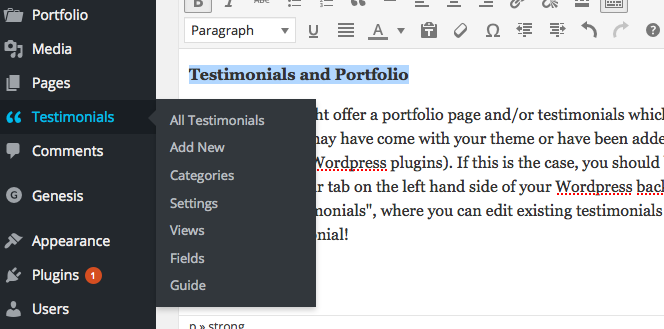The Difference Between WordPress Posts and Pages

So what’s the deal? You just started your first WordPress website and you’re feeling a bit overwhelmed. Don’t let it discourage you, once you learn some basic information and a few simple steps, you’ll be well on your way to sharing your business info or articles. It’s super easy once you get the hang of it! I promise!
This article will help you understand the difference between different types of content. I advise reading everything over first, so that you understand how your WordPress content works before starting to update it.
Note: This article assumes that your theme/layout is already all set up and working properly. If you need help setting up the design of your WordPress website check out our services page.
The Difference Between WordPress Posts and Pages
Pages are generally static. That’s not to say that they can’t be updated, but they are not where you would write articles to publish. In your pages area is where you will create content like your about page, disclaimer, contact information or services depending on your business. This information is usually written once and not updated for quite some time.
There usually isn’t any commenting or social media enabled on these pages either. It’s not really necessary for people to contact you in commenting on your ‘contact’ page, or people to share a tweet of your disclaimer. That being said, there are some exceptions.
Posts are more like articles or journal entries, often referred to as ‘blog posts’. When published, these will show up in reverse chronological order on your homepage (the newest posts will show up first and older ones will be pushed off the page, the more you publish posts).
These are usually much more social, with commenting enabled and social media share buttons.
A great feature of both posts and pages is being able to schedule when they are published. This isn’t used much for pages, since they are generally static, but it’s a great tool for posts. You can write a bunch of content/articles and schedule them to publish at a specific date and time. Sweet, right!?
Testimonials and Portfolio
Some themes might offer a portfolio page and/or testimonials which may differ from your posts and pages. They may have come with your theme or have been added via a plugin (click here to read more about WordPress plugins). If this is the case, you should be able to update them similarly to updating posts or pages. Hover over the tab on the left hand side of your WordPress backend and receive a few options such as “All Testimonials”, where you can edit existing testimonials or “Add New”, where you can add a new testimonial!



